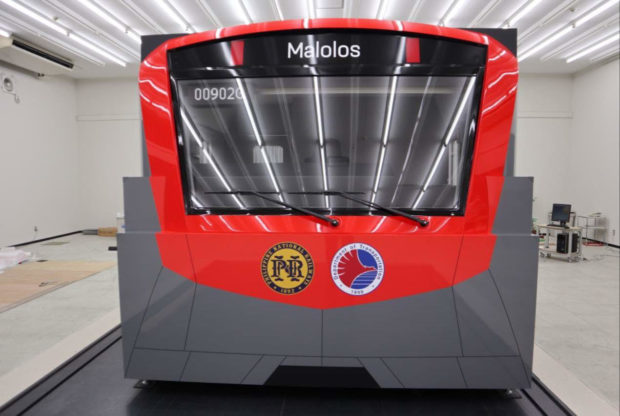Target completion of PNR Clark Phase 2 moved to June 2025

The Department of Transportation (DOTr) unveils the driver’s cab mock-up of the train for the Philippine National Railways (PNR) Clark Phase 1 project. (File photos from the Facebook page of former Transportation Secretary Arthur Tugade)
MANILA, Philippines — The Department of Transportation (DOTr) said on Monday that the target completion date for Philippine National Railways (PNR) Clark Phase 2 has been extended to June 2025 due to delays in the turnover of the construction site to the agency’s project contractor.
Initially, the project was slated to be completed by October 2024.
The project contractor, POSCO Engineering & Construction, cited a delayed turn-over of the land where the Clark Depot would be constructed as the cause for the extension, the DOTr said in a statement.
“Before the 36-hectare site was turned over by the government to POSCO, several fruit-bearing trees were cut down, causing the delay,” said POSCO in DOTr’s statement.
The DOTr said POSCO would construct 48 buildings and facilities at the depot site.
The Clark Depot has 33 stabling tracks to serve as a parking area for the trains and 12 other tracks to access the maintenance facilities.
Meanwhile, the DOTr said that, as of Dec. 31, 2022, 33 percent of the planned construction had already been completed.
DOTr Sec. vows to prevent more delays
DOTr Sec. Jaime Bautista in a separate statement then assured the public that the department is now working with POSCO to “thresh out” the issues surrounding the project.
“This is a very important part of the NSCR [North-South Commuter Rail project], considering the operations control center of the project will be located here. The operations control center is the heart of the operations,” Bautista said.
“It is important that we complete this as planned and on time. I know that there are issues that need to be resolved. The DOTr will work closely with [the contractor], so we can fix problems and address issues [about the project],” he added.
The PNR Clark Phase 2 is the second leg of the NSCR Project.
The NSCR project is a 147-km rail transport route, comprising 37 stations and 464 train cars. The DOTr said it stretches across 28 cities and municipalities in Central Luzon, Metro Manila, and Calabarzon, and is expected to serve over a million passengers a day once fully operational.